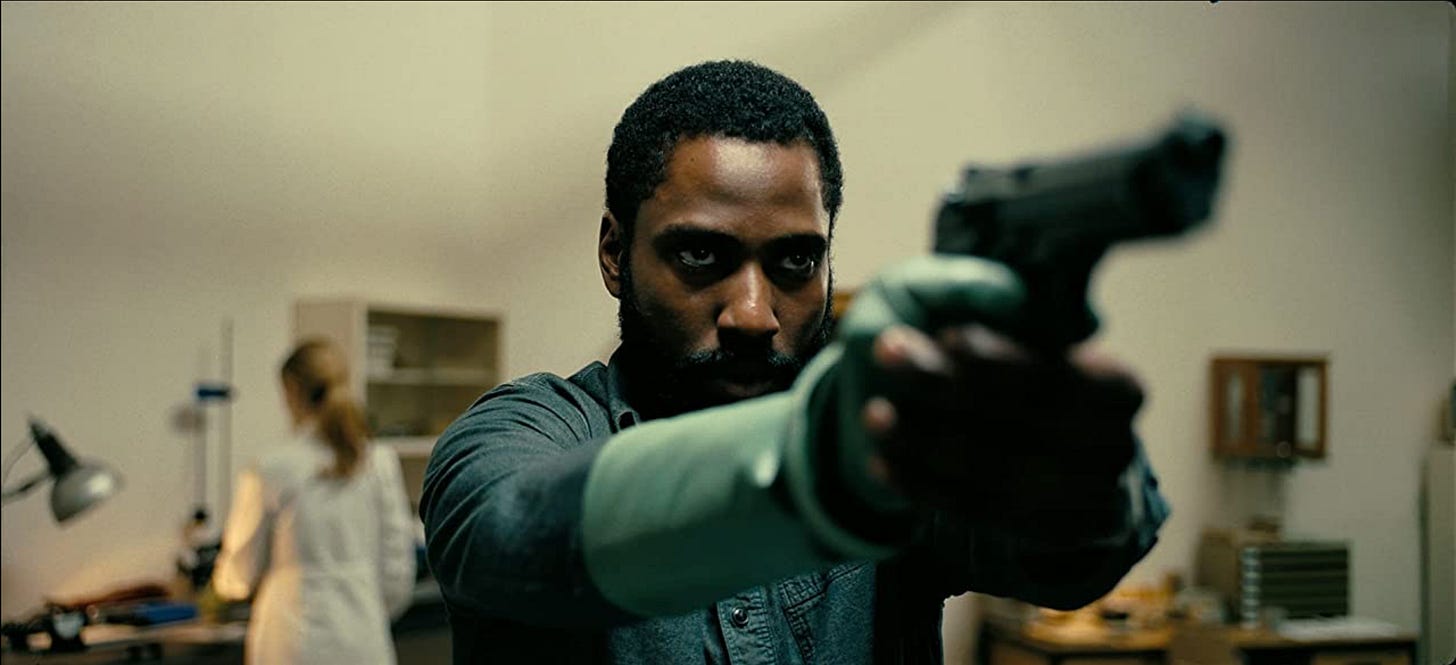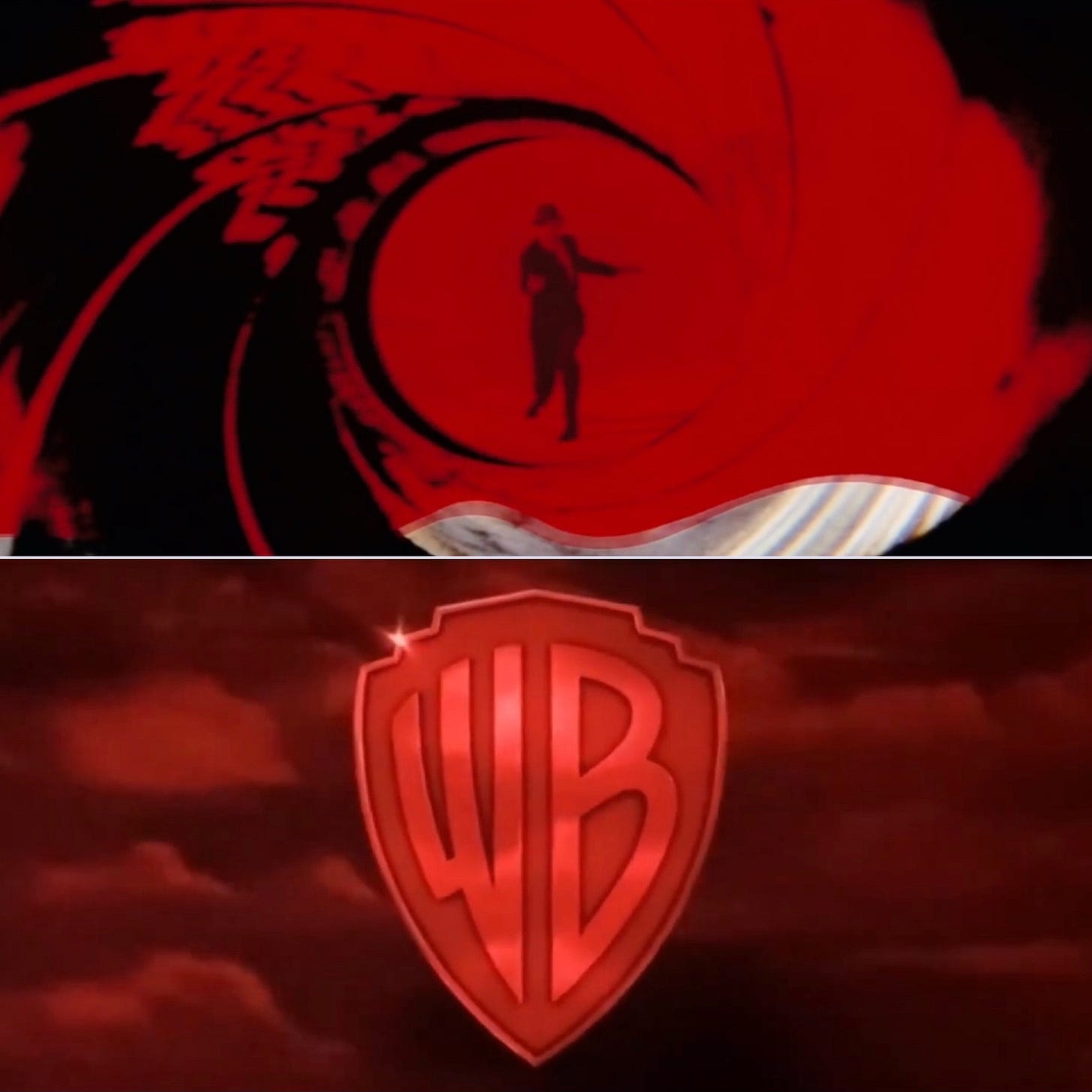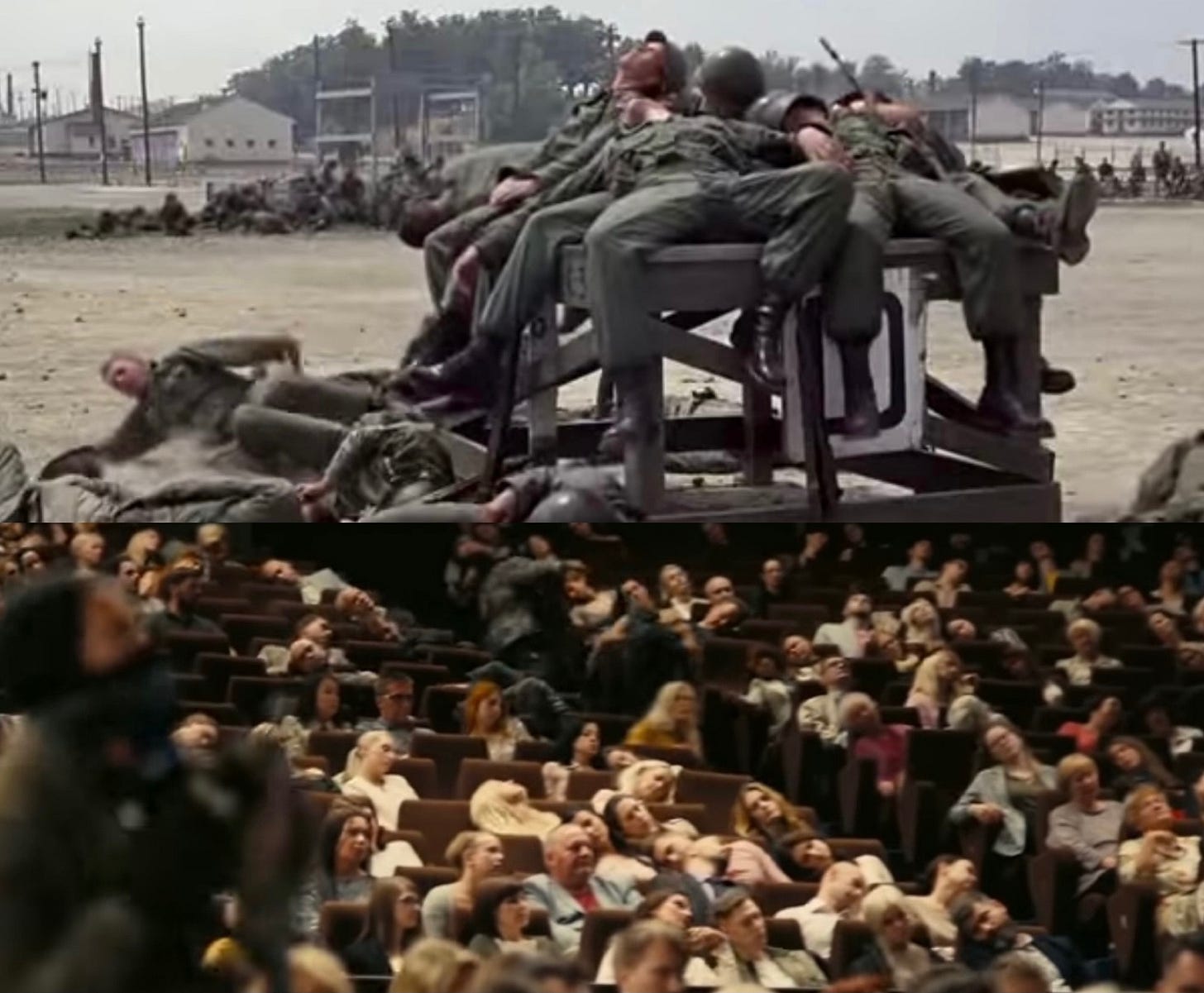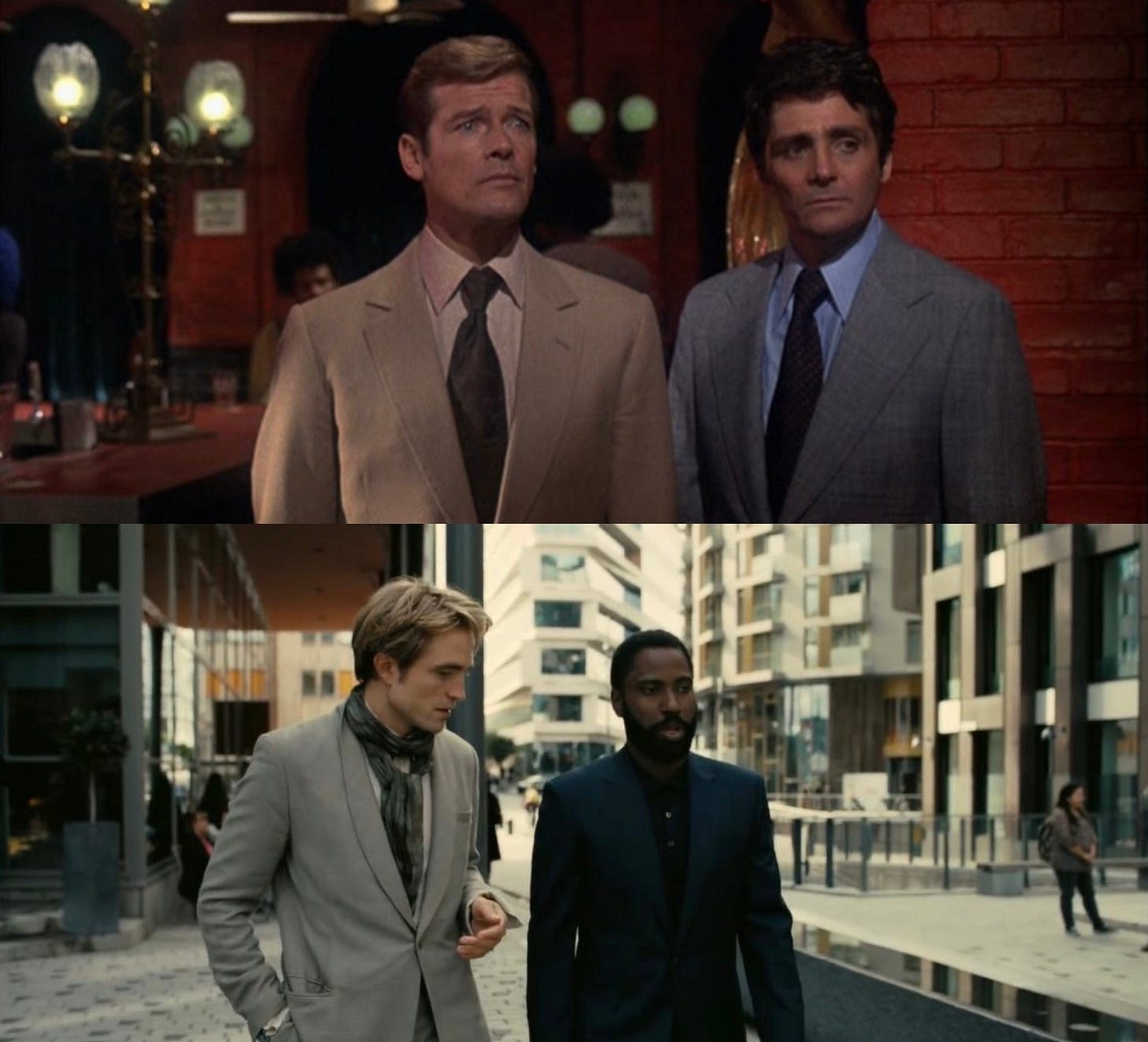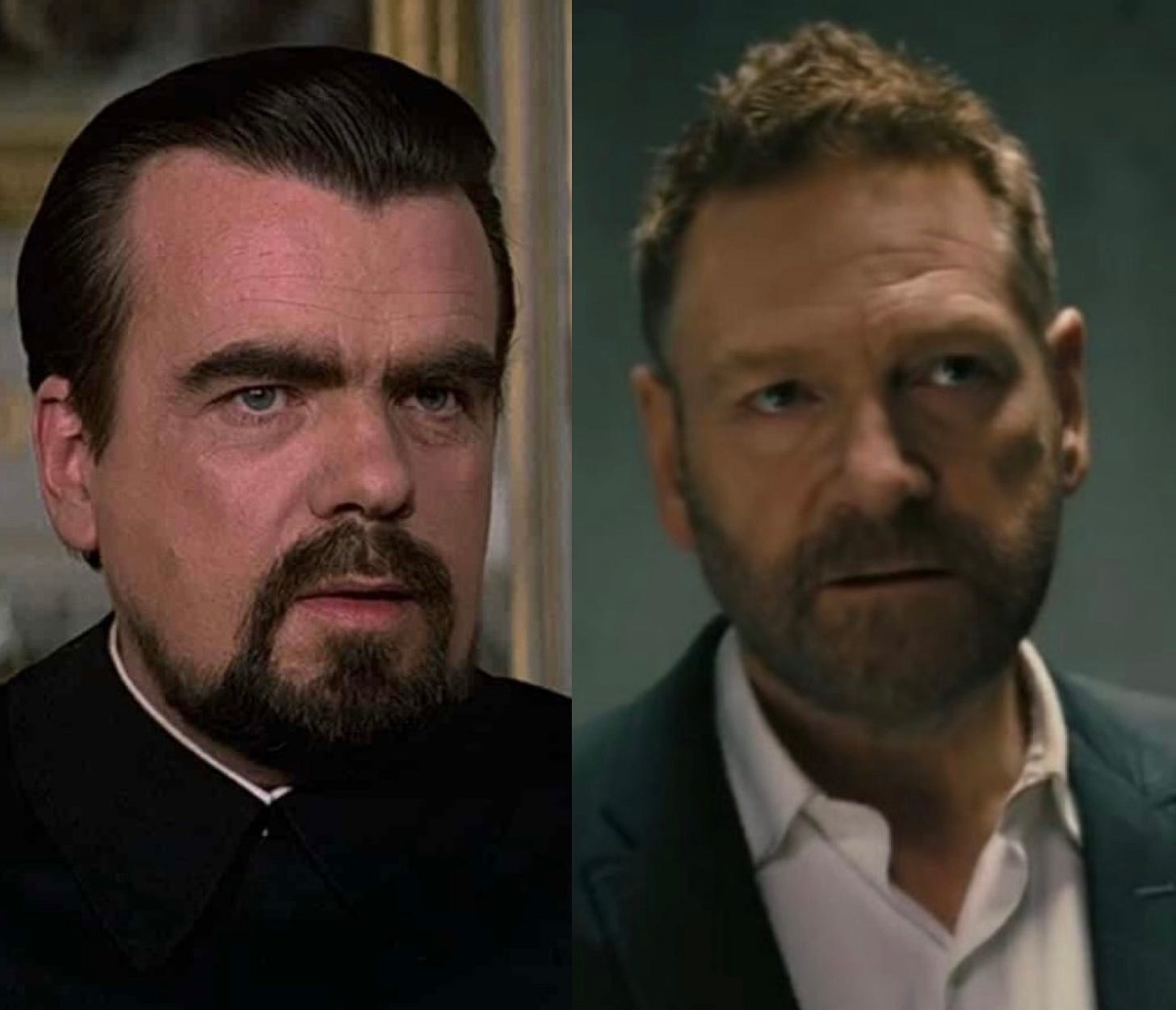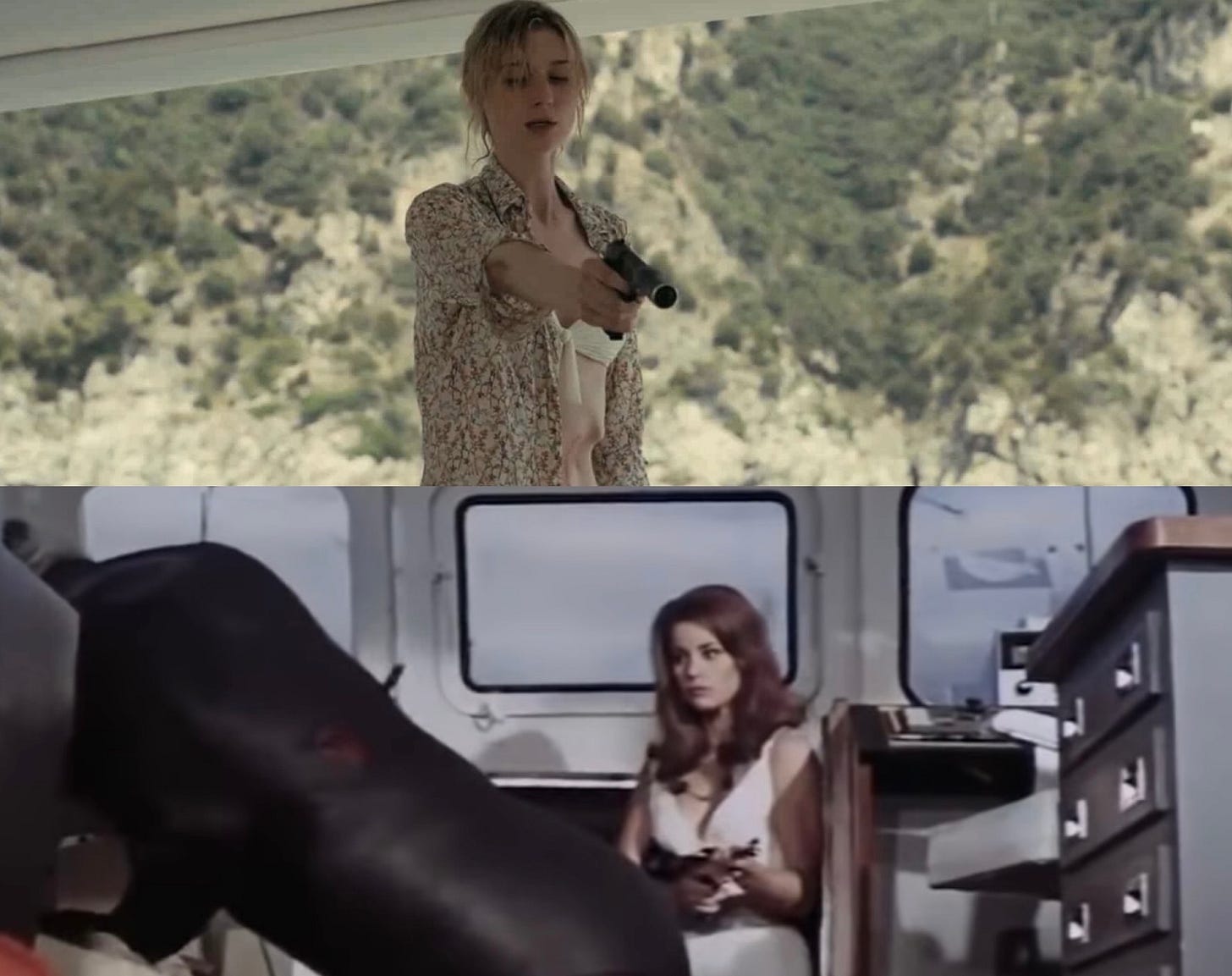cutting room: Tenet is a Love Letter to Bond Movies
On its own merits, Tenet is a Byzantine monument to James Bond first and a Christopher Nolan film second.
Welcome to cutting room, where our unused ideas are given another chance //
Yo I really dug Tenet. Spent last year missing the hell out of theaters but also what’s up with Christopher Nolan pushing so hard for theaters during COVID (major “people MUST gather physically to see MY movie” vibes, which is different from “let’s help people not lose their jobs” just sayin’). But hey, Tenet is finally available to see at home, which for me meant renting a fucking DVD in the mail from Netlfix and, despite Nolan’s wishes, having a perfectly good time watching it from my couch with dinner.
Most of Nolan’s movies I like more than I dislike, but I also get turned off by the fussiness and preciousness with which Nolan approaches his concepts and how his films often feel like looking at an MC Escher drawing with someone behind you demanding you see something more profound than what’s actually there. Fortunately, I mostly found Tenet to be a stylish thrill ride that wasn’t begging me to revere it more than it deserved or even care about understanding it that deeply. And I think what makes that possible is that it’s a loving, Byzantine monument to James Bond movies first, and a Chris Nolan joint second.
If you’ve been with Evil Sexy Hamlet for a while now you already know, Bond movies are practically imprinted in my DNA, which is why I recognized the elaborate lengths Nolan went to just to say “fuck it, I’m literally just gonna make a Bond movie this time.” It’s no secret that Bond is a longstanding inspiration for Nolan (Inception was a clear trial run for his take on the Bond formula, particularly in the action-set piece and cool-guys-in-suits departments), but where Inception contains a handful of Bondian signifiers, Tenet is wall-to-wall Bond-brand fun, from plot structure to filming locations to the subtlest of visual nods and minutest of set and costume details. Lemme show you a handful of things I picked up on.
//Warning: I’ll be getting into some spoilers here, so if you’re worried about that feel free to just browse the images for more of a mood-board experience of Tenet‘s overwhelming Bondness //
WB logo // gun barrel // a blood-soaked screen
This first one may be a stretch, but I’m also pretty sure I’m right about it.
Tenet opens with the Warner Bros. logo soaked in red. I can’t think of any other reason for that other than to evoke the vibrant blood-red that drips down the screen during the gun barrel sequence at the beginning of every Bond movie. It’s the first of Tenet’s hundreds of subtle, obsessive Bond visual nods.
cold open // Goldfinger // nerve gas
Tenet starts with a Bond-esque cold open that also evokes the climax of Goldfinger, in which the titular villain infiltrates Fort Knox by knocking out an entire military base with nerve gas or whatever. Our hero, a CIA agent known only as the "Protagonist" (John David Washington), participates in an undercover sting operation at a Kyiv opera house where they use nerve gas to sedate the opera attendees for the duration of the heist.
You Only Live Twice // mission brief // codes & passwords
Fuckin' 10 minutes into the movie and things already get undeniably Bond. Tenet's cold open ends with the Protagonist getting captured and taking a cyanide pill. He wakes up on a boat at sea and learns that the cyanide pill was his loyalty test. A mysterious boss-guy is basically like, "You're dead now. We're recruiting you into a bigger secret intelligence thing called Tenet. Say the world 'Tenet' and make this hand gesture to the right people and you'll find out what your mission is."
It's all uncannily reminiscent of You Only Live Twice (1967) where MI6 stages Bond’s death to get all the big baddies off his scent for a while, fake-bury him at sea, then bring him back aboard a British naval vessel where he gets his next mission brief and a password to give to his new contact in Japan.
the Quartermaster // “Don’t try to understand it. Feel it”
Every Bond mission starts with a mission brief, followed by a trip to the Quartermaster, where Bond is equipped with gadgets and weapons and gets further details on the mission or whatever. After the Protagonist gets his mission brief in Tenet, he links up with a scientist and/or quartermaster of sorts who teaches him about "inverted time" — the sci-fi concept that propels the plot — and shows him how to fire a bullet backwards with "inverted" weapons that are moving backwards through time or some shit. "Don't try to understand it," she says. "Feel it."
Nolan is always good for these didactic lines that tell the audience exactly how to feel and what to think in a given moment, and I love that this time around his most didactic line is basically telling us to do the opposite. "Don't think about this too hard, just have fun" is equally good advice for a Bond movie, where the convoluted espionage plot mechanics are never as important as the mood and style and overall vibe.
John David Washington // suit game // polo game // Connery game
Another thing more important than plot in both Tenet and the Bond movies is a finely tailored suit. Tenet costume designer Jeffrey Kurland clearly went to great lengths to give John David Washington a look that evokes the fit, tone, texture, and presence of Sean Connery’s Bond outfits. Here’s what he had to say about it in a recent Esquire interview:
If you're making a movie like this then Bond is the kingpin. […] I was more creating the Sean Connery Bond than anything else. Not necessarily suit styles but the way the suit is worn by the character and the way he looks in the suit, and I was trying to go beyond that. It's more the character of Sean Connery's Bond, not necessarily the clothes he was wearing, because obviously those were made in the Sixties. It's a totally different period. But it still, as a look, lasts and works. You want to achieve the essence of that, without stealing it, but still get the satisfaction that it gave.
There's certainly an elegant timelessness to every character's clothes in Tenet, and in the case of Washington's Protagonist, the suit game is intricately on point in exactly the way Kurland describes. In Connery's Bond films, the suits are in cool greys and other understated colors, and cut conservatively to serve a spy who needs to blend in with his surroundings while still looking good, as opposed to later Bonds whose suits are cut and detailed to make the character stand out.
Tenet's polo game is also on point and another clear tip 'o the hat to Connery's Bond. Polos are arguably as essential to the early Bond look as suits and tuxedos, and though Bond seldom if ever wears a polo with a suit (Washington's cornerstone look in Tenet), it's the presence of both that accentuates Washington's killer Connery-esque performance.
Neil // Felix // Nolan // Pattinson
Tenet is full of allies and henchmen that evoke characters from Bond movies. Subbing in for Bond’s best bud and CIA ally Felix Leiter is Tenet-agent Neil (Robert Pattinson). Incidentally, Neil has a much bigger role in Tenet's plot than Felix does in most of his Bond appearances, but he's also the Chris Nolan stand-in, which again I really appreciate for the message Nolan is sending there: "Ok, I'm taking a back seat to Bond, here. Not gonna ask you to think too hard about this or even feel it too hard. There's plenty of complex time-travel shit if you're feelin' it, but mostly we're gonna get up to some cool shit and vibe together."
OHMSS // psychedelic hand-to-hand
Last month I watched a gorgeous 4K of On Her Majesty's Secret Service on Amazon Prime. Rewatching some of the artfully cut, weirdly sped-up, borderline psychedelic fight scenes in OHMSS immediately brought to mind the trippy, "inverted time" hand-to-hand combat of Tenet. Again, a bit of a stretch to say that this is an intentional reference or inspiration, but the visual similarities are striking and palpable.
the macguffin // the villain // the lady //
Most Bond movies have a MacGuffin, usually a bomb or decoding machine or something. Tenet’s MacGuffin is the “Algorithm,” a time bomb of sorts that’s supposed to completely invert time and, like, potentially blow up the universe. As a kid I watched just about every Bond movie about a hundred times without ever really understanding what the MacGuffins were or why exactly Bond was trying to retrieve them or stop them or unlock them or whatever else, other than to upset the villain’s wealth-accumulation or world-domination scheme. I’m still not sure how the Algorithm in Tenet works, or what exactly it would do when set off, but Bond movies have me well trained to recognize a MacGuffin as just that and let it do its thing.
In case you haven't noticed by now, Tenet's entire plot structure is a minute-by-minute lift of a Bond movie (which explains why it's at least 30 minutes too long lol) which becomes most apparent when the leading lady and big bad show up. Kenneth Branagh goes full ham as Andrei Sator (the most Bond villain sounding name ever) an inverted-time traveling Russian oligarch with a plot to assemble the “Algorithm” and truly fuck shit up for the rest of us. His whole look evokes Moonraker’s spacebound, world-crushing villain Hugo Drax. And plotwise, he bears some striking resemblances to several other Bond villains (from Thunderball, Never Say Never Again, Licence to Kill, and a few others I’m sure I’m forgetting) who live on yachts at dazzling oceanside locations with moody bikini-clad mistresses. Bond usually gets to these guys by seducing their ladies and presenting himself as the only way out of an abusive relationship, which of course doesn’t age well.
Nolan kind of sidesteps that shit though, making the villain’s wife, Kat (the incomparable Elizbeth Debicki) an actual character and active participant. She also (SPOILER ALERT) gets to do the Bond villain mistress thing of killing her man before the Protagonist gets a chance.
big battle at villain’s lair // queue ‘007’ theme
One thing I miss about the old Bond movies that’s absent from the modern ones is the big end battles where Bond calls in a paramilitary CIA army to take down the villain’s lair. For Tenet’s finale, Nolan mimics this scenario with a “temporal pincer movement” where one Tenet troop moves backward in time and another moves forward in a simultaneous assault on the ruins of Sator’s Northern Siberian hometown where the Algorithm is guarded. It might be Nolan’s most successful finale yet, and throughout it I couldn’t help but hear in my head the “007 theme” (not to be confused with the James Bond theme), a bombastic orchestral number that usually plays in the big final battle scenes of the old Bond movies.
Clearly I could go on and on, but if you get anything from this obsessive excavation I hope it’s this: By evoking Bond so thoroughly from start to finish, top to bottom, forward and backward, Nolan keeps Tenet planted firmly in the realm of “cool fantasy” - something Sean Connery once described as a scenario where everything you’re seeing on screen is theoretically possible, however improbable. Now, this time-inversion shit isn’t necessarily in the realm of possibility, but it is in the realm of theoretical possibility, and the Bond trappings that surround it ultimately reinforce Nolan’s theme of “faith in an objective reality” without letting it bog down the experience … or at least, my experience. I left Tenet convinced that the only person in the world who loves Bond movies more than me is Christopher Nolan, like he carefully left all the clues and I picked ‘em all up. Maybe he’s somehow me in the future and the movie is me flashing the “Tenet” sign at myself or some bullshit. “Tomorrow never dies,” I suppose.
If you liked the post, please hit the heart button below // It helps us reach more readers on Substack // Also, tell a film-loving friend to subscribe.
Follow me on Twitter and Letterboxd // Read more of my writing: whoisandyandersen.com





